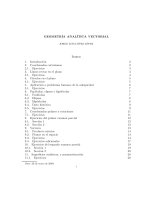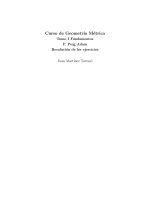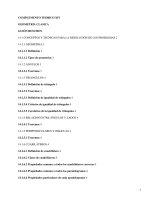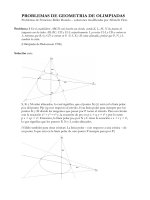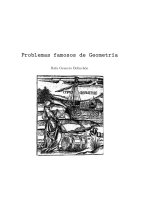tratado de geometría
Bạn đang xem bản rút gọn của tài liệu. Xem và tải ngay bản đầy đủ của tài liệu tại đây (5.48 MB, 288 trang )
JKSflCornell University
Library
arV19505
Treatise
on plane
and
solid
geometi
3 1924 031
307
733
olin,anx
Cornell University
Library
The original of tliis book is in
tine Cornell University Library.
There are no known copyright restrictions in
the United
States
on the
use
of the text.
/>ICIEOTIG EDUCATIONAL SERIES.
TREATISE
PLANE
AND SOLID GEOMETRY
COLLEGES,
SCHOOLS,
AND
PRIVATE
STUDENTS.
WEITTEN rOB
TME
MATHEMATICAl COURSE
OF
JOSEPH
RAY,
M.D.,
BY
ELI T.
TAPPAN,
M.A.,
PBOFBSSOB
OF
MATHEMATICS,
MT. AUBOBN
INSTITUTE.
VAN
ANTWERP,
BRAGG
&
CO.,
137
WALNUT
STREET,
28
BOND STREET,
CINCINNATI.
NEW
YOKK.
Ra
k<-
A
Thorough
and
Progressive
Course
in
Arithmetic,
Algebra,
and
the
Higher
Mathematics.
ithinetic.
Higher
Arithmetic.
Test
Examples
in
Arithmetic.
Trimary
Aritlimetic
Intellectual
Arithmetic.
Rudiments
of
Arithmetic.
Practical
Aritlimetic.
New
Elementary
Algebra.
New
Higher Algebra.
Plane
and
Solid
Geometry.
By
Eli T.
Tappan,
A.M., Pres't
Kenyan
College.
12mo,
doth, 276
pp.
Oeometry
and
Trigonometry.
By Eli
T. Tappan,
A.M.
Prei't Kenyan
College. Sra,
sheep,
420
pp.
Analytic
Geometry.
By Geo.
H.
Howisok,
A.M.,
Prof,
in
Mass.
Institute
of
Technology.
Treatise on
Analytic
Geometry,
especially
as
applied
to the
Properties of
•
Conies
;
including the
Modern
Methods
of
Abridged Notation.
Elements
of
Astronomy. By S.
H. Peaeody,
A.M.,
Prof,
of
Physics
and
Civil Engineering,
Amherst College.
Handsomely
and
profusely
illustrated. 8to,
sheep, 336
pp.
K E'VS.
Ray's
Arithmetical Hey
(
To Intellectual
and Practical)
;
Hey to
Ray's
Higher
Arithmetic
;
Key to Ray's
New
Elementary and Higher Algebras.
The Publishers
furnish
Descriptive
Circulars
of
the ahove
Mathe-
tnaHcal TextSoohs, with Prices
and other information
concerning
them.
Entered
according to Act of Congress, in
the
year
1868,
by Sargent, Wilson
&
HlNKLE, in tlie Clerk's Ofiice of the District Court of
the
United
States for the Sontheru District of Ohio.
PREFACE.
The science of
Elementary
Geometry, after remaining
nearly
stationary for two thousand
years, has, for
a
century
past,
been making decided progress.
This is owing, mainly,
to two causes: discoveries in the higher
mathematics have
thrown new
light
upon
the
elements of
the science
; and
the
demands of
schools, in all enlightened nations,
have
called out many works
by
able mathematicians and
skillful
teachers.
Professor
Hayward, of Harvard University,
as early as
1825,
defined
parallel
lines
as
lines having the
same direc-
tion.
Euclid's definitions
of a
straight line,
of an angle,
and
of a plane,
were based on the idea of
direction,
which
is, indeed, the essence
of form. This thought, employed in
all
these leading
definitions,
adds clearness to the science
and
simplicity
to the
study.
In the present work, it
is
sought to combine
these
ideas
with the
best
methods
and
latest
discoveries in
the
science.
By
careful arrangement
of topics, the theory
of
each class
of
figures
is given
in
uninterrupted
connection. No
attempt
is
made to
exclude
any
method of demonstration,
but
rather
to
present
examples
of all.
The
books most
freely used are, "Cours
de
gfeomfetrie
el6mentaire,
par A. J. H. Vincent et M.
Bourdon
;
"
"
G6-
om§trie th^orique et pratique, etc., par H.
Sonnet;"
"Die
(iii)
IV
PEEFACE.
reine
elementar-mathematik,
von Dr.
Martin Ohm
;
"
and
"Treatise on Geometry
and its
application to
the
Arts, by
Rev.
D.
Lardner."
The subject is divided
into chapters,
and
the
articles
are
numbered
continuously through
the
entire
work.
The con-
venience of
this arrangement for
purposes
of
reference,
has caused it to
be
adopted by
a
large
majority of
writers
upon
Geometry,
as it
had
been
by
writers
on
other
scien-
tific subjects.
In
the chapters on
Trigonometry, this
science is
treated
as a
branch of
Algebra applied
to Geometry,
and the
trig-
onometrical functions are
defined as ratios. This
method has
the
advantages of being more
simple and more brief,
yet
more
comprehensive/
than the ancient geometrical method.
For
many things in these chapters,
credit
is due
to the
works
of Mr. I.
Todhunter,
M. A.,
St. John's College, Cam-
bridge.
The tables
of logarithms of numbers and of sines and
tangents have been
carefully read with the corrected edi-
tion of Callet,
with the tables of Dr. Schron,
and with
those
of
Babbage.
ELI
T.
TAPPAN.
Ohio XJniveksitt, Jan.
1,
1868.
CONTENTS.
PAGE.
PART
FIRST.—
mTEODUCTORY.
CHAPTER I.
PEELIMINARY.
Logical Teems, 9
G-ENpRAL Axioms, 11
Ratio
and Proportion, 12
CHAPTER
II.
THE SUBJECT STATED.
Definitions, 17
Postulates of Extent and of
Form, 19
Classification of Lines,
22
Axioms
op
Direction and of Distance,
23
Classification
op
Buepaces, 24
Division of the Subject, 26
PART SECOND.—
PLANE
GEOMETRY.
CHAPTER III.
STRAIGHT LINES.
Problems,
28
Beoken Lines,
31
Angles,
32
VI
CONTENTS.
PAGE,
Perpendicular
and Oblique Lines 38
Parallel
Lines,
.
43
CHAPTEE
IV.
CIRCUMFERENCES.
General Properties op
Circumferences,
52
Arcs and
Eadii,
53
Tangents,
58
Secants,
.
59
Chords,
60
Angles
at the Center,
64
Intercepted
Arcs,
72
Positions
op
Two
Circumperences,
78
CHAPTER
V.
TRIANGLES.
General
Properties of
Triangles,
85
Equality
of
Triangles,
93
Similar
Triangles,
.101
CHAPTER
VI.
QUADRILATERALS.
General
Properties
op
Quadrilaterals,
. .
.
119
Trapezoids,
.
.
. .
'
122
Parallelograms,
.
.
.
. 123
Measure
op
Area,
128
Equivalent
Surfaces,
I35
CHAPTER
VII.
POLYGONS.
General
Properties
op
Polygons,
I43
Similar
Polygons,
I47
CONTENTS.
vu
Regular Polygons,
151
isopf.rimetry,
159
CHAPTER
VIII.
CIRCLES.
Limit of Inscribed Polygons,
164
Rectification
of
the
Circumference,
166
Quadrature
of the
Circle,
172
PART
THIED.—GEOMETRY OF SPACE.
CHAPTER IX.
STRAIGHT LINES AND PLANES.
Lines and Planes in
Space, 177
Diedral Angles,
185
Parallel
Planes,
190
Triedrals,
195
Polyedrals,
209
CHAPTER
X.
POLYEDRONS.
Tetraedrons, 213
Pyramids,
222
Prisms,
226
Measure
of
Volume,
232
Similar Polyedrons,
239
Regular
Polyedrons,
241
CHAPTER XI.
SOLIDS OF REVOLUTION.
Cones,
247
Cylinders,
249
Viu
CONTENTS.
PAGE.
Spheres,
250
Spherical
Areas,
261
Spherical
Volumes,
270
Mensuration,
276
PART
FOURTH.—
TEIGONOMETRY.
CHAPTEK XII.
PLANE TRIGONOMETRY.
Measure or Angles,
277
Functions
op Angles,
279
Construction and
Use op Tables,
296
Right
angled Triangles,
302
Solution
op Plane Triangles,
304
CHAPTEE
XIII.
SPHERICAL TRIGONOMETRY.
Spherical Arcs and Angles,
314
Right angled Spherical
Triangles,
324
Solution
op Spherical Triangles,
329
CHAPTER
XIV.
LOGARITHMS.
Use op
Common Logarithms,
334
TABLES.
Logarithmic and
Trigonometric
Tables,
. . . 345
ELEMENTS
GEOMETRY
CHAPTER
I.—PRELIMINARY.
Article
1. Before
the student begins
the study
of
geometry,
he should know certain
principles and defini-
tions,
which are of frequent
use,
though they are
not
peculiar
to this
science. They
are
very briefly pre-
sented
in this
chapter.
LOGICAL TERMS.
3.
Every statement of a principle is
called
a
Propo-
sition.
Every
proposition contains the subject
of which the
assertion is made, and the property
or circumstance
asserted.
When the subject has some
condition
attached to it,
the proposition is said to be
conditional.
The subject, with
its condition, if it
have
any, is the
Hypothesis of the proposition, and
the
thing
asserted
is the
Conclusion.
Each of two propositions is the Converse
of
the
other,
when the two are such that
the
hypothesis
of
either
is
the conclusion of the other.
(9)
10
ELEMKNTS
OF
GEOMETKY.
3.
A
proposition is
either
theoretical,
that
is,
it
de-
clares
that a
certain
property
belongs
to
a
certain
thing;
or it
is practical,
that
is,
it
declares
that
something
can
be done.
Propositions
are
either
demonstrable,
that
is,
they
may
be
established by
the
aid
of
reason;
or
they
are
indemon-
strable,
that
is, so
simple
and
evident
that they
can not
be made more so
by
any
course
of
reasoning.
A Theorem
is a
demonstrable,
theoretical
proposition.
A
Problem
is a
demonstrable,
practical
proposition.
An
Axiom is an
indemonstrable,
theoretical
propo-
sition.
A Postulate is an
indemonstrable,
practical
propo-
sition.
A
proposition which flows,
without
additional
reason-
ing, from
previous
principles,
is
called a
Corollary.
This
term is also
frequently applied
to
propositions,
the
demonstration of
which is very brief
and
simple.
4.
The reasoning
by
which
a
proposition is
proved
is called the Demonstration.
The
explanation how a
thing is done
constitutes
the
Solution of
a problem.
A Direct Demonstration proceeds
from the
premises
by a
regular deduction.
An
Indirect
Demonstration
attains its
object
by
showing that any other
hypothesis
or
supposition
than
the one
advanced
would involve
a contradiction, or lead
to an impossible conclusion. Such a conclusion may
be
called absurd, and hence the Latin name
of
this method
of reasoning
—
reductio
ad
absurdum.
A work on
Geometry
consists
of definitions,
proposi-
tions,
demonstrations,
and solutions,
with introductory
or
explanatory
remarks.
Such remarks sometimes have
the
name of
scholia.
GENERAL
AXIOMS.
IJ
5. Eemark. —The
student should
learn
each
proposition,
so
as
to state
separately the
hypothesis
and
the
conclusion,
also
the
condition,
if any.
He should also
learn,
at each
demonstration,
whether it is direct or
indirect;
and
if indirect,
then
what
is the
false
hypothesis
and what
is the absurd
conclusion.
It is a
good
exercise to
state the converse of a proposition.
In
this work the propositions are
first enounced
in general
terms. This general enunciation is usually followed by
a
particu-
lar statement of the principle,
as a fact,
referring to a diagram.
Then follows the demonstration
or
solution. In the latter
part
of the
work these
steps ^re frequently
shortened.
The
student
is
advised
to conclude
every demonstration
with the
general proposition which he has proved.
The student meeting
a
reference, should be certain that he can
state
and apply the principle referred to.
GENEKAL
AXIOMS.
6.
Quantities
which are each equal to the same quarir
tity, are equal to
each other.
7.
If
the same
operation he
performed
upon
equal
quantities,
the
results will be equal.
For
example,
if the same
quantity be separately added
to
two
equal
quantities,
the sums
will be equal.
8.
If
the
same
operation
be performed
upon unequal
quantities, the
results
will
be
unequal.
Thus, if
the
same
quantity
be
subtracted from two
unequal
quantities,
the
remainder of
the greater will
exceed
the
remain'der
of
the
less.
9.
The
whole
is
equal
to the
sum
of
all
the parts.
10.
The
whole is
greater
than a
part.
EXERCISE.
11.
What is
the
hypothesis
of
the first
axiom
?
Ans. If sev-
eral
quantities
are
each
equal to
the
same quantity.
12
ELEMENTS
OF
GEOMETRY.
What is
the subject of
the
first
axiom
?
Ans.
Several
quan-
tities.
What
is
the condition of the
first
axiom
?
Ans.
That
they
are
each equal
to the
same quantity.
What
is
the conclusion of the
first
axiom ?
Ans.
Such
quan-
tities
are equal
to
each
other.
Give
an
example of this axiom.
RATIO
AND
PROPORTION
12.
All
mathematical
investigations
are conducted
by
comparing
quantities,
for
we
can form
no
conception
of any
quantity except by
comparison.
13.
In the
comparison
of one quantity with another,
the relation
may be
noted in two ways
:
either, first,
how
much one
exceeds
the other; or,
second, how many
times one
contains
the other.
The
result of the
first inethod is
the difference
be-
tween the two
quantities
;
the result
of the
second is the
Ratio of one to
the other.
Every
ratio, as
it
expresses
"
how
many times
"
one
quantity
contains another, is a
number. That a ratio
and
a number
are quantities
of the same kind,
is fur-
ther shown by
comparing
them; for
we
can
find their
sum, their
difference, or
the ratio
of one to the
other.
When the division can
be exactly
performed,
the
ratio
is a whole number; but it may
be a fraction,
or a radical,
or
some
other
number
incommensurable
with
unity.
14.
The symbols
of the quantities
from
whose
com-
parison a
ratio is
derived,
are frequently
retained
in its
expression.
Thus,
The
ratio of a
quantity
represented
by a to
another
represented by b, may
be written
,
.
A
ratio is usually written
a : b, and is
read,
a is to
b.
RATIO AND PROPORTION.
13
This
retaining of the
symbols is
merely for conven-
ience,
and to show the derivation
of the ratio;
for
a
ratio
may be expressed by a single figure,
or
by any
other symbol,
as
2,
m,
\/3,
or tt. But since
every ratio
is a number, therefore, when a ratio is
thus
expressed
by means
of two terms, they
must
be
understood to
represent two
numbers
having the same relation as the
given
quantities.
The
second term is the
standard or unit with which
the first
is
compared.
So, when the ratio is expressed in the form of a
frac-
tion,
the
first term, or
Antecedent, becomes the
numera-
tor,
and the second, or
Consequent,
the
denominator.
15.
A
Proportion is
the
equality
of two
ratios, and
is
generally
written,
a
: h : : c : d,
and
is read,
a
is to 6
as c
is
to d,
but it
is
sometimes
written,
a
: b^^c : d,
or It
may
be,
h^d'
all of
which
express
the same
thing: that a
contains
h
exactly
as
often as c
contains d.
The
first
and
last terms
are
the
Extremes, and the
second
and
third are
the
Means
of
a proportion.
The
fourth
term is
called
the
FoURTH
Proportional
of the
other
three.
A
series of
equal
ratios
is
written,
a : b
:: c : d
: : e
f,
etc.
When
a
series
of
quantities
is such
that
the
ratio
of
each
to the
next
following
is the
same,
they
are
written,
a
: b
: c
: d,
etc.
I
4
ELEMENTS OF
GEOMETRY.
Here,
each term,
except
the
first and last, is
both
an-
tecedent
and consequent.
When
such a series
consists
of
three terms, the second
is the
Mean
Proportional
of
the
other two.
16. Proposition.
—
The
product
of
the extremes
of
any
proportion is equal
to the
product
of
the
means.
For any proportion,
as
a : b
: : c : d,
is the equation of two fractions,
and may
be
written,
a c
b~d-
Multiplying
these
equals
by the product
of the denom-
inators,
we have
(7)
aXd=bXc,
or the product of the extremes
equal to
the
product of
the
means.
17.
Corollary.
—The square
of a mean
proportional
is
equal
to the
product of the
extremes.
A
mean
pro-
portional
of two quantities
is the
square
root
of their
product.
18. Proposition.
—
When
the
product
of
two quanti-
ties is
equal to
the product
of
two others,
either
two may be
the extremes
and
the other
two the
means
of
a proportion.
Let
aXd
=
bXc represent
the
equal
products.
If
we
divide
by b and
d, we
have
j
=
^;
or,
a:b::c:d.
(1st.)
If
we
divide
by c
and
d, we
have
f=-^;
or,
a:
c :: b
: d.
(2d.)
If
we
arrange
the
equal
products
thus
:
bXc=aXd,
RATIO AND
PROPORTION.
15
and
then divide by a and c, we have
l:a::d:c.
(Sd.'l
By
similar
divisions, the student may
produce
five
other
arrangements
of the
same
quantities
in
pro-
portion.
19.
Proposition.
—
The order
of
the
terms may
le
changed
without
destroying the proportion,
so long as the
extremes remain extremes, or both become means.
Let
a
:
b
:
: : d
represent the given
proportion.
Then
(16),
we have
aXd=bXo.
Therefore
(18),
a and
d may
be
taken as either the extremes
or the means of
a new proportion.
20.
When
we
say the first
term is to the third as
the
second is to the
fourth,
the proportion is
taken by
alternation,
as
in the second
case.
Article
18.
When we
say the
second term is to the first
as the
fourth
is to the
third, the
proportion is taken inversely,
as in the third case.
21.
Proposition.
—
Ratios which are equal to the same
ratio are equal to each other.
This is a case of the first axiom
(6).
21^.
Proposition.;
—
If
two quantities have the same
multiplier, the
multiples will have the same ratio as the
given quantities.
Let a and b represent any two quantities,
and
m
any
multiplier. Then the identical equation,
wjXaX6
=
JwXJX«,
gives
the proportion,
jwXa : mXb
:
:
a : b
(18).
23.
Proposition.
—
In
a series
of
equal
ratios, the sum
of
the
antecedents is to the sum
of
the
consequents
as
any
antecedent
is to its consequent.
IG
ELEMENTS
OF
GEOMETRY.
Let a:h::c:d::e:f::g:h,
etc.,
represent
the
equal ratios.
Therefore
(16),
aXd^hY^c
aXf=bXe
aXh
=
bXg
To these add
aXb
=
hXa
aXib+d+f+h)
=
bX{a+c+e+g).
",
Therefore
(18),
a^c^e^g
:
b+d+f+h
::
a:b.
This is
called
proportion
by
Composition.
24.
Proposition.
—
The difference
between
the
first
and
second
terms
of
a
proportion
is
to the
second,
as
the
dif-
ference
between
the
third
and fourth
is
to
the
fourth.
The
given
proportion,
a
b
:: c : d,
may be
written, ^-
—
^•
Subtract
the
identical
equation,
b _d
b^d
The
remaining
equation,
a^b
c
—
d
'~h~^~d~'
may be
written, a
—
b : 6 : : c
—
d :
d.
This is
called proportion by
Division.
25.
Proposition
—
If
four
quantities are
in proportion,
their
same powers are in proportion, also their same roots.
Thus,
if we have
a:b:
THE
SUBJECT
STATED.
27
CHAPTER
II.
THE
SUBJECT
STATED.
26.
"We know
that
every
material
object
occupies
a
portion
of space,
and
has extent
and form.
For
example,
this
"book occupies a
certain
space;
it
has
a definite
extent, and
an exact form.
These
prop-
erties
may be considered
separate, or
abstract from
all
others. If the
book be removed,
the space which
it had
occupied
remains, and
has these
properties, extent
and
form,
and none other.
27. Such a limited
portion
of
space is called
a solid.
Be
careful to
distinguish the geometrical solid, which
is a
portion
of space, from the
solid body
which occu-
pies space.
Solids may be of all the varieties
of extent and form
that are
found in nature
or art,
or that can be imagined.
28.
The limit or boundary
which separates a solid
from the surrounding
space is a
surface. A surface is
like a solid in having only these two properties,
extent
and form
;
but a surface differs from a
solid in having
no
thickness or depth, so that a solid has
one kind of
extent which a surface has not.
As
solids and surfaces have
an abstract
existence,
without
material
bodies,
so two
solids
may occupy
the
same
space,
entirely or
partially.
For example, the
position
which
has been occupied by
a book,
may be
now
occupied by
a
block of wood.
The
solids
represented
Geom.—
2
IS
ELEMENTS OP
GEOMETRY.
by the book and block may
occupy
at
once,
to
some
ex-
tent,
the same space. Their
surfaces
may
meet
or cut
each
other.
29.
The
limits or
boundaries
of
a
surface
are lines.
The
intersection of two
surfaces,
being
the
limit
of tho
parts into
which each
divides
the
other,
is
a Kne.
A line has these two
properties
only,
extent and form
;
but
a surface has one
kind of
extent
which a
line
has
not: a line differs
from a surface
in
the same way that
a surface does
from a solid. A
line has neither thick-
ness nor
breadth.
30. The ends or limits of a line are points. The
intersections of lines are
also points. A point is
unlike
either lines, surfaces, or solids, in this, that it has neither
extent nor
form.
31.
As
one
line may be met by any number
of oth-
ers, and a surface cut
by
any number
of others; so a
line
may have
any number of points, and a surface any
number of
lines
and points. And a solid may have
any
number of intersecting surfaces, with their lines
and points.
DEFINITIONS.
32.
These considerations
have
led to the
following
definitions
:
A
Point has only
position,
without
extent.
A Line has length,
without
breadth
or
thickness.
A Surface has
length
and
breadth,
without
thick-
ness.
A Solid has length,
breadth,
and
thickness.
33.
A
line may
be measured
only
in
one
way,
or,
it
may be
said a line has
only one
dimension.
A
surface
has two, and a
solid has
three
dimensions.
We
can not
THE
POSTULATES.
jg
conceive
of
any
thing
of .more
than
three
dimensions.
Therefore,
every fhing
which
has
extent
and
form
be-
longs
to one
of
these three
classes.
The
extent
of
a line
is called
its
Length;
of a
sur-
face,
its
Area
;
and
of a
solid, its
Volume.
34.
Whatever
has only
extent
and form
is
called
a
Magnitude.
Geometry
is
the
science
of magnitude.
Geometry
is
used whenever
the
size,
shape,
or posi-
tion of
any thing is
investigated.
It
establishes
the
principles
upon which
all measurements
are made.
It
is the basis of
Surveying,
Navigation, and
Astronomy.
In
addition to these
uses of Geometry,
the study
is
cultivated for
the
purpose of training
the student's
pow-
ers of language,
in the
use of
precise
terms
; his reason,
in the various
analyses and
demonstrations;
and his
inventive faculty, in the making
of new
solutions and
demonstrations.
THE POSTULATES.
35. Magnitudes may have any
extent.
"We
may
conceive lines,
surfaces,
or solids, which
do not
extend
beyond the
limits of the smallest
spot which
represents
a point
;
or, we
may conceive them of
such extent
as
to
reach across the
universe. The astronomer
knows
that
his lines
reach to the
stars, and his
planes
extend
be-
yond the
sun.
These ideas are expressed
in
the fol-
lowing
Postulate of
Extent
—
A magnitude may
he made
to
have
any extent whatever.
36.
Magnitudes
may, in our minds, have any form,
from
the
most
simple, such as
a
straight line,
to that
of
the
most
complicated piece
of
machinery.
ATo may



